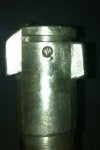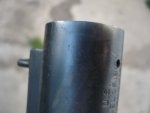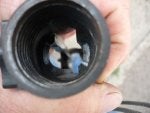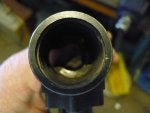While everyone knowledgeable about '03 Springfield Rifles are aware of the "Low Number Rifles Problem," nothing is ever said about P-17 Enfields.
My Cousin, a U.S. Army veteran of World War II, mentioned to me that while he was in Basic Training, his unit was issued P-17 Enfields. He also told me that three of those rifles "Blew Up" on the Rifle Range. He didn't remember any other specifics, except three of the rifles did blow up.
I have personally seen two "wrecked" P-17 Rifles. One was on display at a gun shop in Athens, Georgia years ago and another at a gun show. I never found out why both rifles had blown up, i.e., it could have been defective hand loaded ammo, something lodged in the barrel, etc.
Are there any issues with the P-17 that is not widely known that would cause their receivers to fail?
My Cousin, a U.S. Army veteran of World War II, mentioned to me that while he was in Basic Training, his unit was issued P-17 Enfields. He also told me that three of those rifles "Blew Up" on the Rifle Range. He didn't remember any other specifics, except three of the rifles did blow up.
I have personally seen two "wrecked" P-17 Rifles. One was on display at a gun shop in Athens, Georgia years ago and another at a gun show. I never found out why both rifles had blown up, i.e., it could have been defective hand loaded ammo, something lodged in the barrel, etc.
Are there any issues with the P-17 that is not widely known that would cause their receivers to fail?













